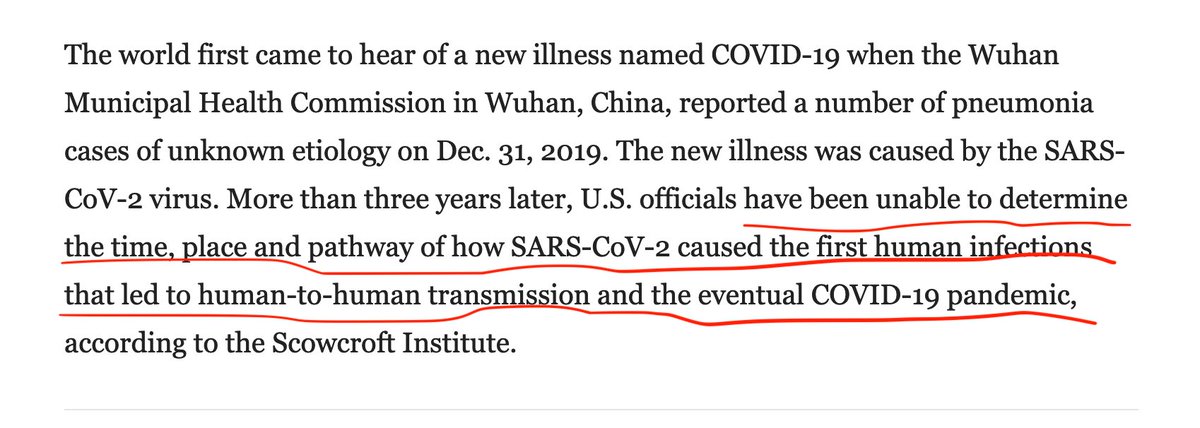1. Gerald Parker, associate dean for Global One Health at Texas A&M, will never see his name in a story by @carlzimmer @JoelAchenbach @sciencecohen or @SmritiMallapaty b/c he uses neutral language that does not promote a #scicomm agenda. theeagle.com/news/where-did…
Some examples:
Some examples:

2. Parker describes "two plausible theories" although "neither proves direct and definitive evidence."
This language violates #scicomm which finds that a lab leak is "speculation" that "lacks direct evidence."
Maybe Parker doesn't have a NY Times subscription?
Here's more:
This language violates #scicomm which finds that a lab leak is "speculation" that "lacks direct evidence."
Maybe Parker doesn't have a NY Times subscription?
Here's more:

3. Parker states that we don't know how this virus jumped into humans and began transmission.
This violates #scicomm by ignoring some shabby studies published in Science by Worobey. et. al. that were lapped up by #scicomm writers at Times, Post, Science & Nature.
This violates #scicomm by ignoring some shabby studies published in Science by Worobey. et. al. that were lapped up by #scicomm writers at Times, Post, Science & Nature.

4. Lot to unpack here, but Parker is pointing out that photos show Chinese scientists were not wearing proper protective gear, and that it seems odd as hell that a virus found far suddenly appeared in Wuhan, where they were studying these viruses.
Coincidence of coincidences!
Coincidence of coincidences!

5. Parker also notes that this market outbreak doesn't make much sense, which totally, and forever violated sacred #scicomm on the pandemic narrative.
I'm guessing this guy sees through the @hholdenthorp who continues to mislead people about evidence of a possible lab accident
I'm guessing this guy sees through the @hholdenthorp who continues to mislead people about evidence of a possible lab accident

6. Finally, Parker violates #scicomm by not calling people "conspiracy theorists" and instead calling for an investigation that is independent, objective, and w/o conflicts of interest.
Those words frighten virologists and Science Magazine which has published their papers.
Those words frighten virologists and Science Magazine which has published their papers.

• • •
Missing some Tweet in this thread? You can try to
force a refresh





















